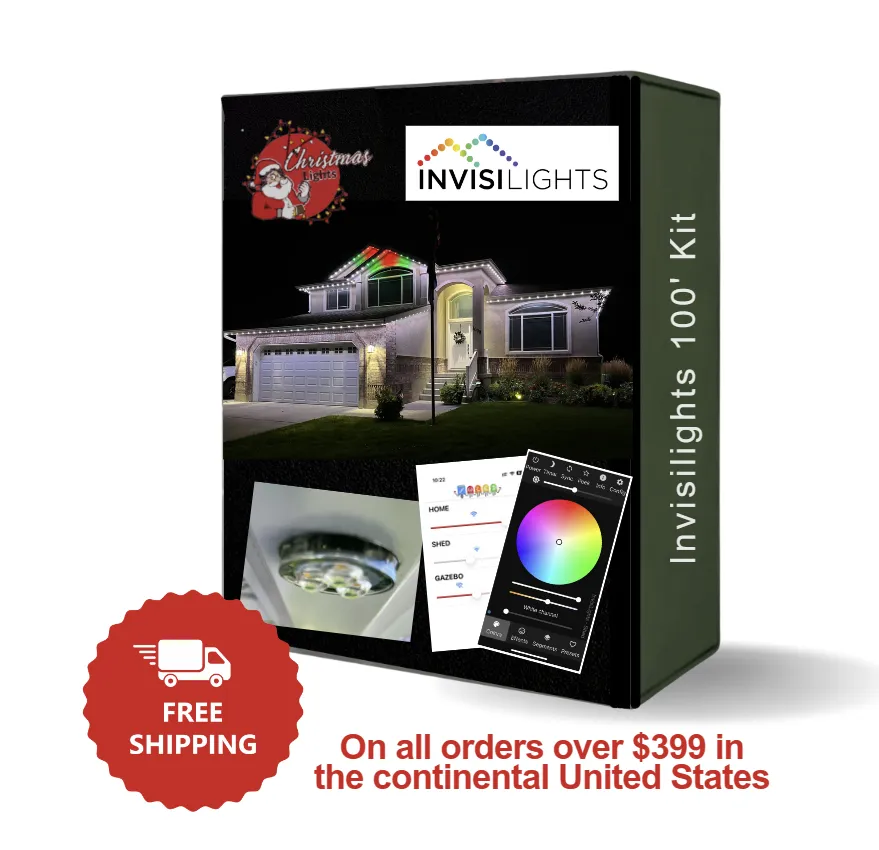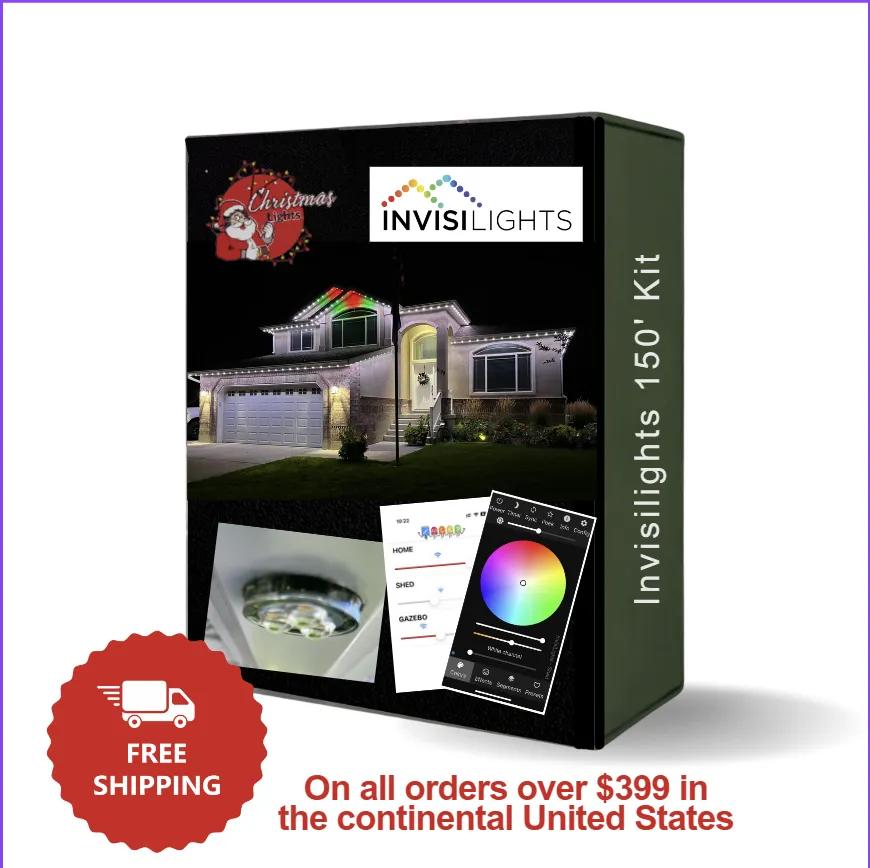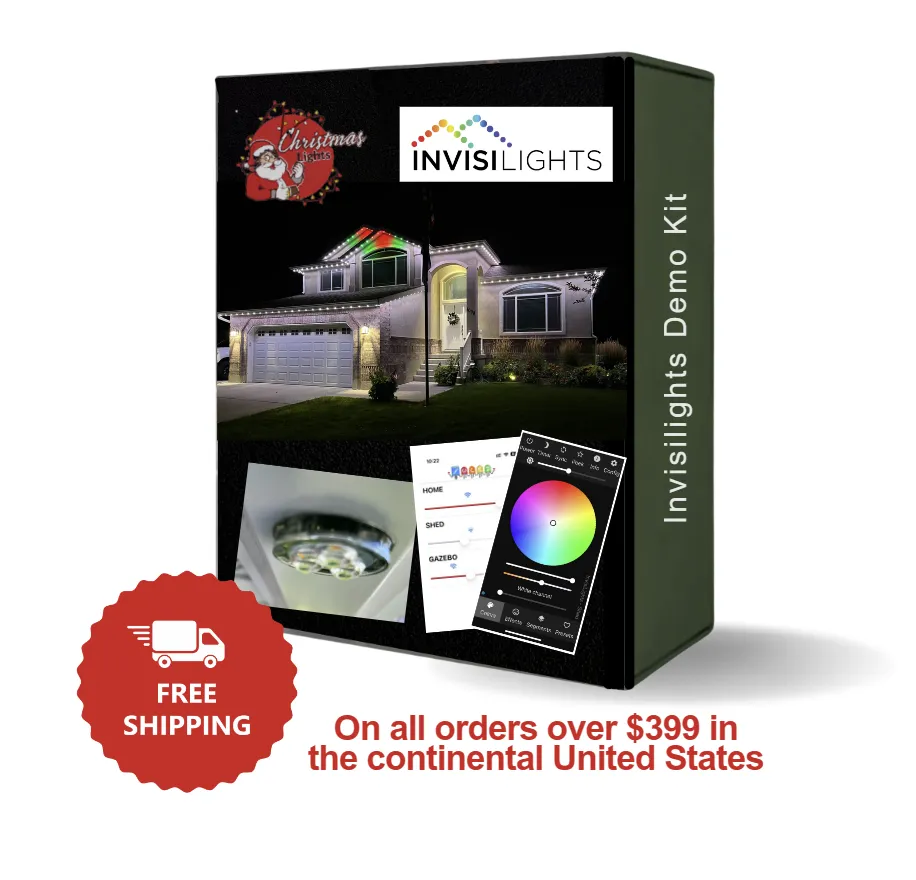Invisilights
Permanent Holiday Lighting
Customizable Lights for Any Event
WHAT YOU NEED TO KNOW BEFORE ORDERING
Total Linear footage of the installation.
This should include footage of lights and channel along with any Extensions or jumps you'll need to make
Where your controller box will be located
This is the most important step to planning out an installation, Without knowing where the controller will be you'll have no way to know the right materials to buy when it comes to extensions and accessories.
What Voltage system you want to use 24V or 36V
This is a decision you will make based on convince and efficiency, the most important factor with this will be the footage of each lighting run. If the total footage of a run is over 100' you'll need to either power inject on that run or switch to the 36V system that can go up to 200' before needing power injection.
Draw a Map
By mapping out the installation you'll be able to better understand and plan out the install giving you a better idea of what all you'll need to purchase to complete the job.
take the measurements from your map and add up the total number of materials you'll need.
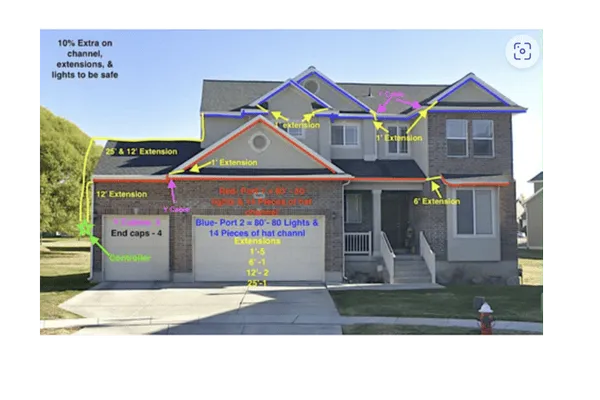
For the Map out example above the total material breakdown is:
System Voltage: 36V
Color of channel: Cameo
Channel Type: Hat
Total Lighted Footage: 160'
Power injection: NO
Controller: 1
Channel: 27- 6' sticks
Screws- 200
Lights: 175
1' extensions-7
6' Extensions-2
12' extensions-2
25- extensions- 1
Y Cables- 3
End caps- pack of 10
Absolute necessities
-Controller
-Lights
-Channel
-Screws
-Extension cables
Other Accessories
-Y Cable
-End Caps
- Signal boosters
-Power injection material
When would you need to power inject?
The controller will come with 3 outputs for your lighting runs, each 36V output can do a Max of 200', the 24V system can do a max of 100'. After that max you'll need to inject power. After you do so you can go an additional 100' with the 24V or 200' with the 36V system.
Power injection is needed due to voltage drop, voltage drop happens due to the length traveled away from the power source along with the gauge of the wire. due to the gauge of wire the lights and extensions run on it drops in voltage enough at 100' with the 24V system and 200' with the 36V system to effect the lights performance requiring a addition of power (Power Injection)
Materials needed for power injection 36V
Power injection pig female pig tale
Power injection Extension cables
Power injection T Cable.
Materials needed to Power inject 24V
16/2 - 12/2 Low voltage landscaping wire
Cut and Splice T cable
Water Proof Wire connectors
Discover the Transformative Power of Invisilights: Expertly Installed Permanent Lighting Solutions
Enhance your installation offerings with Invisilights, the premier permanent lighting solution designed for seamless integration into any property’s exterior architecture.
Crafted with high-quality aluminum channels and advanced LED technology, Invisilights delivers durability and superior energy efficiency—key selling points for your clients seeking long-lasting, cost-effective lighting solutions. Our system not only provides brilliant illumination but also boosts the aesthetic appeal and functionality of any home.
Offer your clients peace of mind with our robust 5-year warranty, ensuring reliable performance and minimal maintenance needs. This warranty supports your commitment to quality and customer satisfaction, making it easier for you to sell and install with confidence.
Our flexible, programmable system allows you to meet any client’s specific desires—from subtle accents to full-scale holiday displays—making it an adaptable choice for various applications. With Invisilights, you can cater to a wide range of preferences and needs, increasing your market reach and customer retention.
Choose Invisilights for your installations and add a transformative product to your portfolio that will impress clients and ensure your services remain in demand for years to come.
Frequently Asked Questions
What exactly comes in the 150' InvisiLights permanent outdoor lighting kit?
The InvisiLights kit is comprehensively equipped to ensure you have everything you need for installation. Each kit includes:
27 sticks of 6-foot Aluminum Channel to house and protect the lighting elements.
150 feet of dynamic RGBW LED Lights, which includes 23 sets of 6-count and 14 sets of 1-count lights, allowing for extensive coverage and diverse configuration options.
2 Data Boosters to enhance signal strength across the lighting installation, ensuring consistent control and color output.
A 320W Power Supply capable of supporting up to 190 puck lights, providing ample power for even the most extensive setups.
1 GFCI Outlet Adapter to ensure safe outdoor electrical connections.
1 Controller that allows you to manage and customize the lighting effects easily.
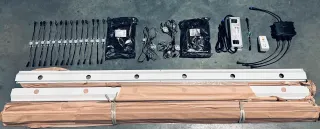
Will I need any additional components besides what's included in the Invisilights permanent lighting kit?
While the Invisilights kit comes with all the essential components for a standard installation, there are a couple of scenarios where you might need additional items:
Jumper Wires: Depending on the layout of your installation and the number of gaps or 'jumps' between the sections of lights, you may require jumper wires. These wires help bridge the gaps without losing the continuity of the light sequence, ensuring a smooth and uniform display across more complex architectures.
Data Boosters: If any section of your lighting setup is more than 15 feet away from the control box, additional data boosters will be necessary. Data boosters help maintain the integrity and brightness of the lights over longer distances, ensuring consistent performance throughout your installation.
Can I choose the color of the aluminum channel for my InvisiLights kit?
Yes, you can select your preferred color for the aluminum channel to match your home’s exterior or personal taste. Please make sure to specify your color choice in the notes at checkout when you place your order.
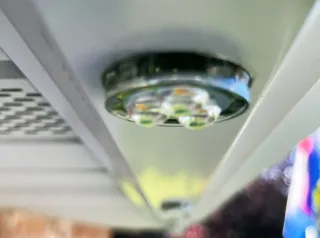
How do the included components of the InvisiLights kit enhance the lighting system?
Each component in the InvisiLights kit plays a crucial role in creating an effective and stunning lighting display:
Aluminum Channels: Provide a durable, weather-resistant housing for the LED lights, which helps in maintaining a clean and nearly invisible look during the day.
RGBW LED Lights: Offer vibrant, full-spectrum color and white light combinations, making it perfect for any occasion from festive holidays to elegant ambient lighting.
Data Boosters: Ensure that the signal remains strong across longer distances, which is crucial for larger installations.
Power Supply: Designed to efficiently handle the energy needs of the system without overload, ensuring safety and durability.
GFCI Outlet Adapter: Adds an extra layer of safety by protecting against electrical shorts and surges, particularly important in outdoor settings.
Controller: Provides the flexibility to customize and control the lighting sequences, colors, and patterns right from your smartphone or controller, adding convenience and advanced functionality to your lighting system.

Can I use Invisilights year-round?
Absolutely! Invisilights are designed for versatile use throughout all seasons. Whether you're celebrating a special occasion, setting a mood for a party, Love your favorite sports team, or simply enhancing your home's ambiance, our lighting systems provide the perfect solution for any event, big or small.

Can I set timers and events for Invisilights?
Yes, Invisilights feature advanced programmable settings that allow you to schedule lighting for specific events and automate timers. This functionality ensures that your lighting preferences are perfectly aligned with your lifestyle, turning on and off at predetermined times without any manual intervention.

Is it possible to achieve warm or soft white with Invisilights?
Absolutely, Invisilights are equipped with RGBW technology, which includes a dedicated white LED alongside the standard red, green, and blue LEDs. This addition allows the system to produce authentic warm white, soft white, and various other shades of white with greater accuracy and intensity compared to traditional RGB systems. This capability ensures that you can effortlessly tailor the lighting to fit the desired ambiance and aesthetic of any environment, providing precise control over both vibrant colors and the subtlety of different white tones.
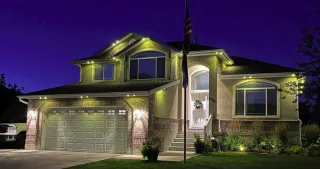
How do you ship your product?
Our products are shipped directly from our warehouse using reliable shipping carriers to ensure timely and safe delivery. Each product is securely packaged to prevent damage during transit, and we provide tracking information so you can follow your order’s journey to your doorstep.
Where are the controller and power supplies installed?
The controller and power supplies for Invisilights are typically installed in an accessible location such as a garage or utility room. These components connect to your home’s WiFi network, allowing seamless control over the lighting system via our user-friendly mobile app.
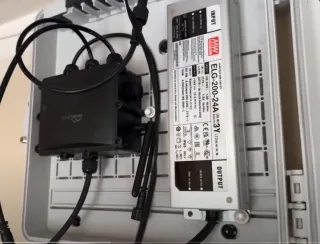
How long do Invisilights last?
Invisilights are engineered to last, with each LED bulb boasting a lifespan of over 50,000 hours. Given a typical usage of 10 hours per night, this translates to approximately 5,000 nights. This means your Invisilights could illuminate your home's exterior for nearly 14 years under these conditions, ensuring that your investment not only adds beauty but also long-term value to your property.
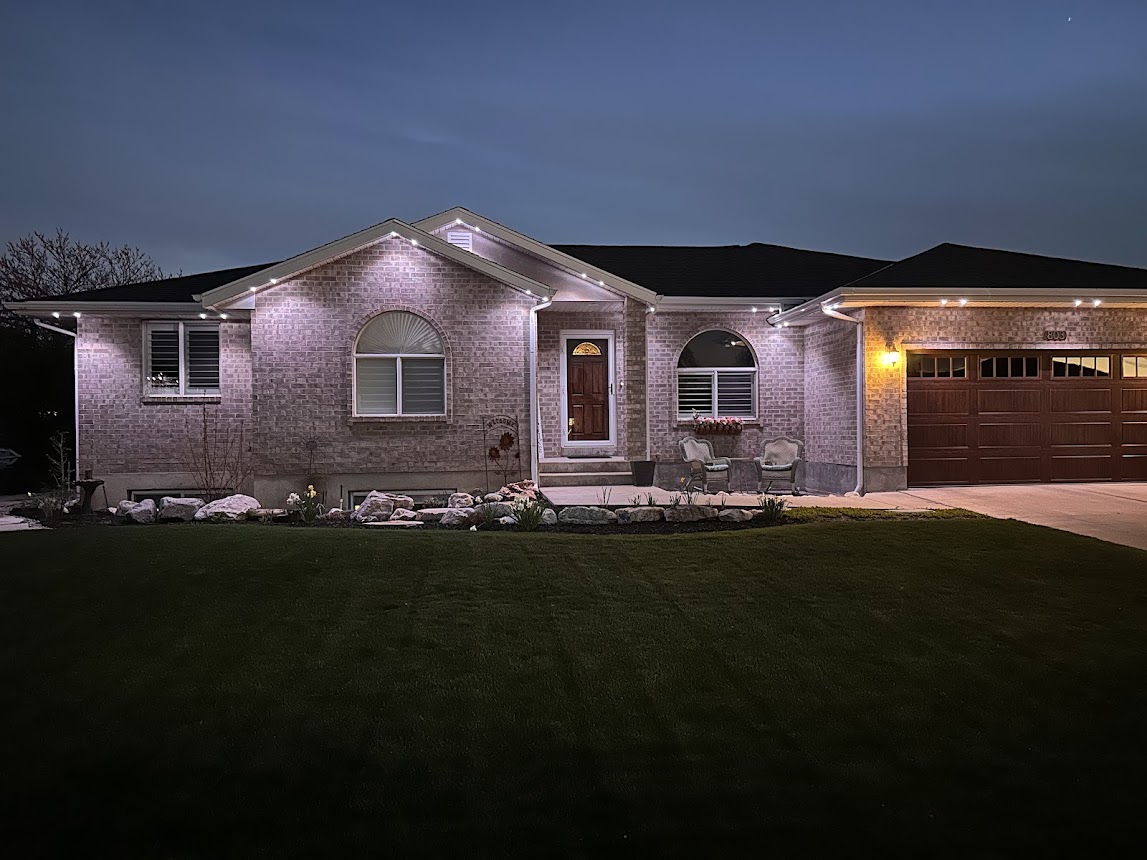
Are Invisilights dimmable?
Yes, all Invisilights are fully dimmable. This feature allows you to adjust the intensity of the light to suit various occasions, from a soft glow for a romantic evening to bright, vibrant colors for a festive celebration.

What types of custom channels are available?
Invisilights offers two types of custom channels, available in 40 different colors, ensuring a nearly invisible installation. These channels are designed to blend seamlessly with your home’s architecture, providing discreet yet effective lighting.

Can I control different zones independently?
Yes, the Invisilights system supports multiple zones which can be controlled independently or synchronized. This functionality allows for intricate lighting designs that can vary across different areas of your home, enhancing the overall impact and utility of your installation.
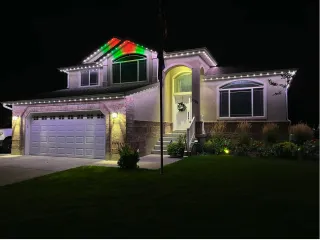
What is outdoor permanent lighting?
Permanent lighting refers to architectural-grade lighting systems that are installed permanently on your property to provide year-round illumination.
How does permanent lighting differ from traditional holiday lighting?
Unlike traditional holiday lighting, which is typically temporary and used only during specific seasons, permanent lighting is installed once and can be used throughout the year for various occasions
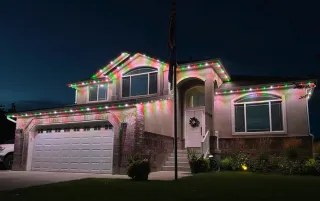
Discover Expert Tips on Our Blog

Light Up the Night Expert Tips for Stunning Holiday Displays
As professional Christmas light installers, we at Christmaslights.io understand that creating a truly memorable holiday display goes beyond simply stringing up a few strands of lights. The magic lies in the artful use of different lighting patterns and effects to transform ordinary homes and businesses into winter wonderlands. In this comprehensive guide, we'll explore how to elevate your installations from good to extraordinary, using a variety of techniques and technologies.
Understanding Basic Lighting Patterns
Before diving into complex effects, it's crucial to master the basics. There are four fundamental lighting patterns that form the foundation of any great display:
1. Linear patterns: These involve straight lines of lights, often used to outline architectural features or create geometric shapes.
2. Radial patterns: Resembling a starburst, these patterns emanate from a central point, perfect for trees or circular decorations.
3. Clustered patterns: Grouping lights together creates focal points and areas of intensity in your display.
4. Random patterns: While seemingly chaotic, strategically placed random lights can add depth and interest to your overall design.
By combining these basic patterns, you can create complex and visually appealing displays that capture attention and imagination.

Exploring Advanced Lighting Techniques
Once you've mastered the basics, it's time to explore more advanced techniques:
Layering Lights
Layering involves using multiple types of lights at different depths to create a rich, multidimensional effect. For example, you might use string lights to outline a roofline, icicle lights along the eaves, and projector lights on the lawn. This technique adds depth and interest to your display.
Creating Depth with Foreground and Background Lighting
Use brighter, more prominent lights in the foreground and softer, subtler lighting in the background. This creates a sense of depth and makes your display more visually engaging. For instance, bright spotlights on a decorated tree in the front yard, with softer string lights on trees further back.
Using Negative Space Effectively
Remember, not every inch needs to be illuminated. Strategic use of darkness can enhance the overall impact of your lighting. Use negative space to create contrast and draw attention to key elements of your display.
Incorporating Movement and Animation
Static displays are beautiful, but adding movement can take your installation to the next level. Consider using chasing lights, fading effects, or even programmable LED systems to add dynamic elements to your design.

Popular Lighting Effects and How to Achieve Them
Let's explore some popular effects and how to create them:
1. Twinkling and chasing lights: Use specialized string lights or controllers to create a sparkling or running light effect.
2. Fading and color-changing effects: LED lights with built-in programs or smart controllers can produce smooth transitions between colors.
3. Icicle and dripping light effects: Icicle lights or specialized drip lights can create the illusion of falling snow or icicles.
4. Starburst and explosion effects: Use radial patterns with lights of varying intensity to create a burst effect.
5. Wave and ripple effects: Programmable LED strips or specialized controllers can create flowing, wave-like patterns.
Choosing the Right Lights for Different Effects
Selecting the appropriate lights is crucial for achieving your desired effects:
- String lights are versatile for outlining and filling spaces.
- Net lights work well for uniform coverage of bushes and hedges.
- Icicle and curtain lights create vertical cascading effects.
- Rope lights and flex neon are perfect for creating smooth, continuous lines.
- Projection and laser lights can cover large areas with patterns and moving effects.
- Smart lights and programmable LEDs offer the most flexibility for creating custom effects.

Creating Focal Points in Your Display
A well-designed display should guide the viewer's eye to key areas:
1. Highlight architectural features like columns, arches, or unique windows.
2. Emphasize trees and landscaping with uplighting or wrapped trunks and branches.
3. Create light sculptures or 3D effects using shaped wire frames covered in lights.
4. Use brighter or more colorful lights to draw attention to specific areas, like entryways or centerpiece decorations.
Balancing Different Lighting Elements
Creating a harmonious display involves balancing various elements:
1. Mix warm and cool lights to create contrast and depth. For example, combine warm white lights on a house with cool blue accents in the yard.
2. Combine static and dynamic elements. Use steady lights for the main structure and add moving elements for visual interest.
3. Integrate colored and white lights carefully. Use colored lights as accents to complement a base of white lights.
4. Blend different light sizes and intensities. Use larger, brighter bulbs for impact and smaller lights for detail work.

Designing for Different Home Styles
Adapt your lighting design to complement the architecture:
- Classic and traditional homes often look best with warm white lights and classic patterns.
- Modern and contemporary designs can handle bold colors and geometric lighting patterns.
- Rustic and farmhouse aesthetics pair well with warm lights and nature-inspired elements.
- Mediterranean and tropical styles can incorporate vibrant colors and playful patterns.
Technical Considerations for Complex Displays
As you create more intricate displays, keep these technical aspects in mind:
1. Power management: Calculate power requirements carefully and use appropriate extension cords and outlets.
2. Electrical safety: Always use outdoor-rated equipment and GFCI protection.
3. Weather-proofing: Ensure all connections are protected from moisture and use lights rated for outdoor use.
4. Controllers and timers: Utilize these to automate your display and create complex effects.
5. Troubleshooting: Be prepared to quickly identify and fix common issues like burnt-out bulbs or loose connections.

Planning and Executing Your Display
A successful installation starts with thorough planning:
1. Sketch out your design, considering the home's architecture and landscaping.
2. Test different combinations of lights and effects before final installation.
3. Install efficiently and safely, using proper equipment and techniques.
4. Fine-tune your display after dark, adjusting placement and effects as needed.

Enhancing Your Display with Complementary Elements
Take your display beyond just lights:
1. Incorporate non-lit decorations like wreaths, garlands, or figurines to add daytime appeal.
2. Use reflective ornaments or surfaces to amplify light effects.
3. Add sound and music synchronization for a truly immersive experience.
4. Consider subtle scent elements near entryways for a multi-sensory approach.
Staying Current with Lighting Trends
The world of holiday lighting is always evolving. Stay ahead of the curve by:
1. Offering eco-friendly and energy-efficient options to environmentally conscious clients.
2. Integrating smart home technology for easy control and customization.
3. Exploring new color trends and combinations each season.
4. Keeping an eye on emerging lighting technologies and incorporating them into your designs.

Creating a stunning holiday light display is a true art form, blending creativity, technical skill, and a deep understanding of light and color. By mastering different lighting patterns and effects, you can transform ordinary spaces into extraordinary winter wonderlands that delight and inspire.
Remember, the key to a great display lies in thoughtful design, careful execution, and attention to detail. Don't be afraid to experiment with new techniques and technologies to push the boundaries of what's possible.
At Christmaslights.io, we're committed to helping professional installers create magical holiday experiences. We hope this guide inspires you to take your installations to the next level, bringing joy and wonder to communities throughout the holiday season.
Don't forget to check out our wide range of professional-grade lighting products and installation tools at Christmaslights.io. From energy-efficient LED strings to advanced controllers, we have everything you need to bring your lighting visions to life.
Let's illuminate the world, one dazzling display at a time!

1. Q: What are the four basic lighting patterns mentioned in the post?
A: The four basic lighting patterns are linear patterns, radial patterns, clustered patterns, and random patterns.
2. Q: How can I create depth in my lighting display?
A: Create depth by using brighter, more prominent lights in the foreground and softer, subtler lighting in the background. Also, use layering techniques with different types of lights at various depths.
3. Q: What are some popular lighting effects for holiday displays?
A: Popular effects include twinkling and chasing lights, fading and color-changing effects, icicle and dripping light effects, starburst and explosion effects, and wave and ripple effects.
4. Q: How can I choose the right lights for different effects?
A: Choose lights based on the desired effect: string lights for versatility, net lights for bushes, icicle lights for cascading effects, rope lights for continuous lines, and programmable LEDs for custom effects.
5. Q: How do I create focal points in my lighting display?
A: Create focal points by highlighting architectural features, emphasizing trees and landscaping, creating light sculptures, and using brighter or more colorful lights to draw attention to specific areas.
6. Q: What should I consider when designing for different home styles?
A: Consider the architectural style of the home: use warm white lights for traditional homes, bold colors for modern designs, nature-inspired elements for rustic styles, and vibrant colors for Mediterranean or tropical homes.
7. Q: What are some technical considerations for complex displays?
A: Technical considerations include power management, electrical safety, weather-proofing, using controllers and timers effectively, and being prepared to troubleshoot common issues.
8. Q: How can I enhance my lighting display beyond just lights?
A: Enhance your display by incorporating non-lit decorations, using reflective surfaces, adding sound and music synchronization, and considering scent elements for a multi-sensory experience.
9. Q: What are some current trends in holiday lighting?
A: Current trends include eco-friendly and energy-efficient options, smart home integration, exploring new color combinations, and incorporating emerging lighting technologies.
10. Q: How should I plan and execute my lighting display?
A: Plan your display by sketching out your design, testing different combinations before installation, installing efficiently and safely, and fine-tuning your display after dark.



Copyright ©2025 All Right Reserved website designed by christmaslights.io
Terms of Service / Privacy Policy
Have questions or need assistance?
Contact us at (855)619-LITE


